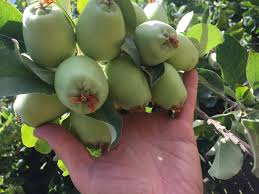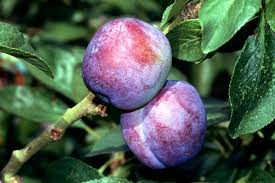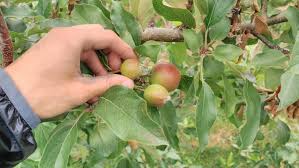Written by Benedict Vanheems, June 25, 2015
When I first started gardening, the idea of cutting away half of my apple fruitlets seemed absurd. I was horrified at the thought of discarding the fruits I’d worked so hard to grow. However, after some advice from a more experienced gardener, I learned that thinning fruit is a key technique for improving both the size and quality of the remaining harvest.
What is Fruit Thinning?
At first glance, thinning tree fruit seems counterintuitive. Why remove perfectly good fruit? However, nature itself engages in a similar process—this natural phenomenon, known as the “June drop” (or “December drop” in the Southern Hemisphere), is when trees drop excess fruitlets to focus resources on fewer, stronger fruits. As gardeners, we simply help this process along by removing additional fruitlets to allow the remaining ones to grow larger and healthier.

The June Drop
The “June drop” is a natural thinning process where trees shed excess fruitlets early in the growing season. Although it may seem alarming, it’s completely normal. Trees shed fruits that are unlikely to survive or produce seeds, prioritizing quality over quantity. As gardeners, we focus on improving the remaining fruits for a juicier, more satisfying harvest.

Why Thin Fruit?
Without thinning, trees will often produce an overabundance of small, underdeveloped fruits. By removing some, you can ensure that the fruits left behind are larger, healthier, and more attractive.
There are additional benefits to thinning:
- Preventing Biennial Bearing: Overburdened trees may skip bearing fruit in the following season. Thinning helps avoid this by ensuring the tree doesn’t exhaust itself.
- Risk Management: Overloaded branches are more likely to snap, so thinning reduces the risk of damage.
- Improved Airflow and Light: Thinning encourages better airflow and sunlight penetration, which improves ripening and reduces the risk of disease and pests.
How to Thin Fruit
Not all tree fruits need thinning, but the following fruits typically benefit from it: apples, plums, peaches, nectarines, pears, and apricots. Here are general guidelines for each type:
Apples:
- Remove any misshapen or unhealthy fruitlets first.
- Take out the “king” fruit (the central fruit in a cluster) and any poorly positioned fruit.
- For dessert or eating apples, space remaining fruits 10-15cm (4-6in) apart; for culinary varieties, space them 15-23cm (6-9in).
- Use pruners or sharp scissors, or pull the fruit off by hand once you get the hang of it.
Plums:
- Plums grow quickly, so thinning is essential. Leave 5-8cm (2-3in) between smaller fruits, or space them 15cm (6in) apart for pairs.

Peaches and Nectarines:
- Start thinning peaches in spring when they’re about the size of a hazelnut. Leave 10cm (4in) between fruits.
- Once peaches reach walnut size, thin them further to 20-25cm (8-10in) apart.
- Nectarines should be thinned all at once when they’re the size of a walnut, spacing them 15cm (6in) apart.
Apricots:
- Only thin apricots if the crop is particularly heavy. Remove excess fruits to leave them 5-10cm (2-4in) apart when they are hazelnut-sized.
Pears:
- Pears generally need less thinning than apples, but thinning can still improve quality. Leave two fruits per cluster, spaced 10-15cm (4-6in) apart. If the tree is overproducing, thin to one fruit per cluster.
Final Thoughts
Thinning can feel daunting, but it’s a necessary step for producing a high-quality, abundant harvest. By carefully selecting which fruits to remove, you’ll improve the size, flavor, and health of the remaining ones, making your hard work in the garden truly worthwhile. Be brave—thinning is one of the best things you can do for your fruit trees!
